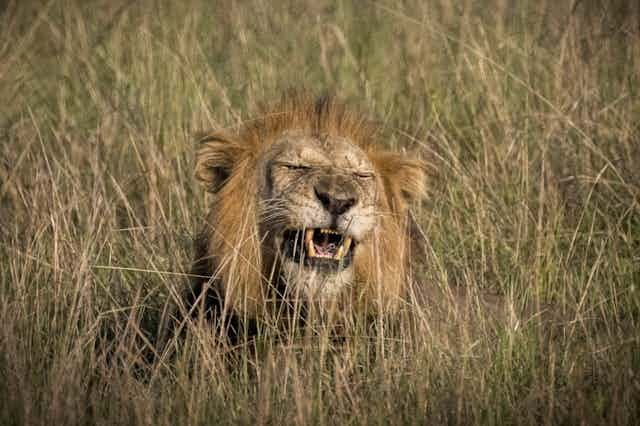New research has found that the persistent sound of traffic can aggravate Galápagos yellow warblers and cause them to change their behavior, possibly because they realize their songs may be being drowned out by the noise. The study was led by experts from Anglia Ruskin University (ARU) and University of Vienna’s Konrad Lorenz Research Centre. […]

Microplastics in sea turtle nests could cause a dangerous gender imbalance
Scientists are finding microplastics everywhere they look for them. A new study finds these tiny plastic particles in sea turtle nests on a remote Malaysian island. Researchers warn that microplastics could alter nest temperatures, potentially skewing the sex ratio of incubating turtles that could further endanger species already facing significant challenges. Up to 1,700 green […]

Results of the Best Photo of the Month March 2025
We are delighted to announce the results of our latest photo competition. Jess Findlay wins First Prize with his outstanding image ‘A Great Grey Owl (Strix Nebulosa) Family Portrait‘ . Alan Murphy wins Second Prize with his inspirational image ‘Adult Caracara‘ . Third Prize goes to Jess Findlay with ‘A Female Sea Otter (Enhydra Lutris […]

Uganda’s lions in decline, hyenas thriving – new findings from country’s biggest ever carnivore count
For nearly 15 years almost no information was available on the population status of Uganda’s large carnivores, including those in its largest national park, Murchison Falls. These species represent a critical part of Uganda’s growing tourism economy. The country is home to the famed tree-climbing lions, which are much sought after for this unique behaviour. […]

Harmful Algae Bloom in California Is Poisoning Sea Lions and Dolphins
A dangerous harmful algal bloom is wreaking havoc along Southern California‘s coastline, poisoning marine animals and alarming environmental experts. According to The Weather Channel’s Jan Wesner Childs, at least 140 sea lions have been rescued since February 20, and sick dolphins and birds are also being found on the beaches. This marks the fourth year […]

In the hills of Italy, wolves returned from the brink. Then the poisonings began
High on a mountain pass near the town of Cocullo in central Italy lay six black sacks. Inside were nine wolves, including a pregnant female and seven youngsters – an entire pack. They had eaten slabs of poisoned veal left out a few days earlier, dying over the hours that followed, snarls of pain fixed […]

State of Birds Report Shows Shorebird Numbers Are Still Declining
Migratory shorebirds travel thousands of miles between wintering and breeding grounds. For years, scientists, ornithologists, and ordinary birders have been concerned about habitat loss along established flyways. Analysis of shorebird migration data reveals negative population trends for the vast majority of the species studied, with many species having lost significant portions of their populations. The […]

Locals debunk myths linking endangered pink river dolphins to ‘love perfumes’
A colonial-era myth about endangered pink river dolphins in the Amazon has led to a false belief that perfumes or pusangas made from their body parts are potent love potions. According to a recent Mongabay documentary, the myth has created a market for the perfumes, further endangering the dolphins. The film, released in February, follows […]
